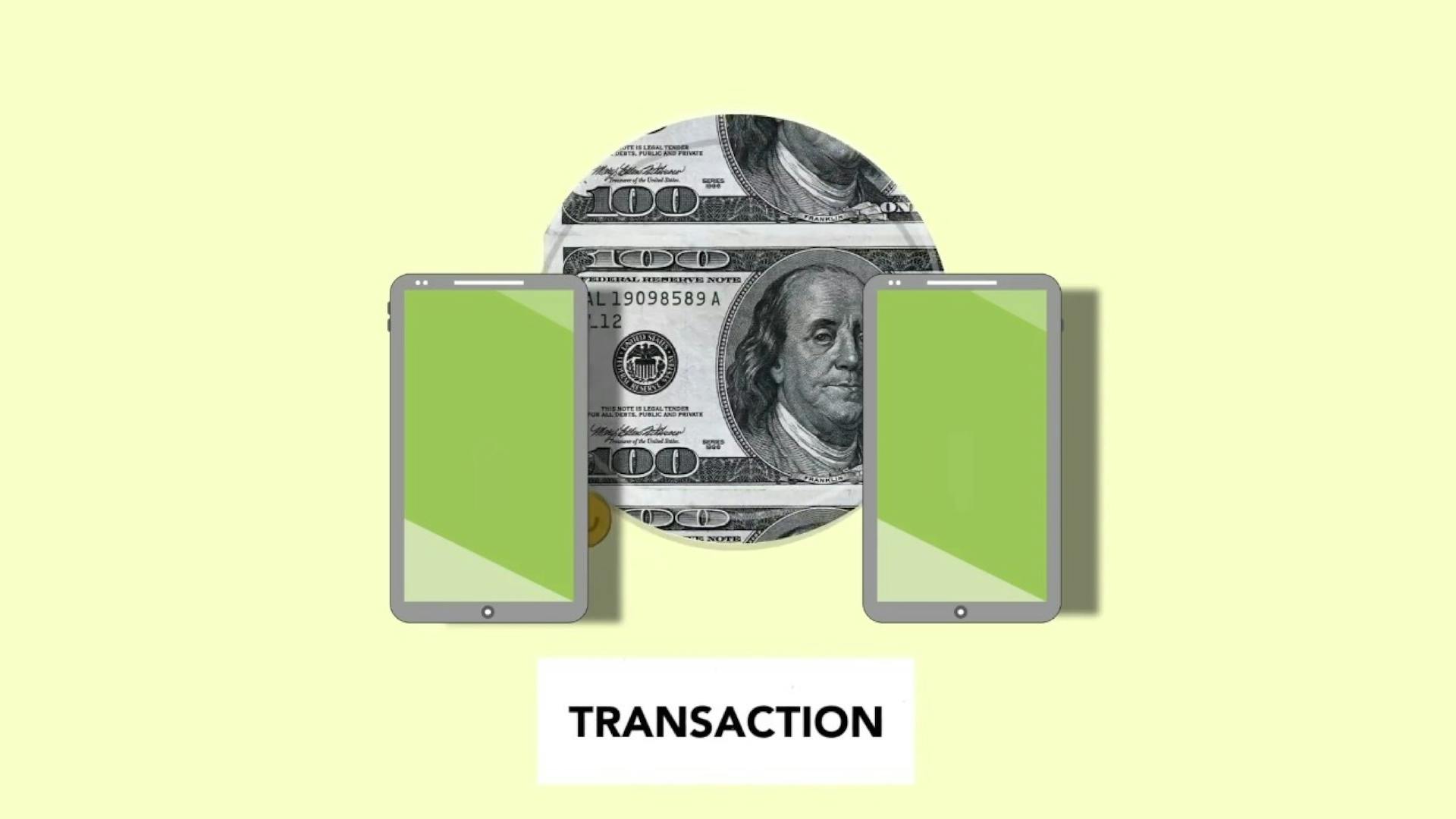
A Telegraphic Transfer UK is a secure way to send and receive money across borders, and it's been around since the 19th century.
The transfer is typically initiated through a bank or a financial institution, which then sends a message to the recipient's bank to release the funds.
The process is usually swift, taking just a few hours or days, depending on the banks involved and the time of day.
The Telegraphic Transfer UK system uses a standardized format for the transfer message, which includes details such as the sender's and recipient's bank account numbers, the amount to be transferred, and any relevant exchange rates.
What Is a Telegraphic Transfer?
A telegraphic transfer, or TT for short, is a method of electronically transferring funds from one bank account to another. It's commonly used for international transactions, although it can also be used for domestic transfers.
The term "telegraphic transfer" might sound old-fashioned, but it actually has its roots in the past when messages were sent via telegraph or telegram. This involved transmitting written communications through cables using coded signals.

TT transfers are arranged through a bank's dedicated network, making the process faster, more convenient, and secure. This is a big improvement over the old Telex network, which used teleprinters for text-based communication.
One of the reasons TT transfers are so popular is their convenience, speed, and security. You might see your bank or service provider advertising TT accounts or using the abbreviation TT in their services.
Readers also liked: Bangladesh Electronic Funds Transfer Network
Understanding Telegraphic Transfers
Telegraphic transfers are often confused with wire transfers, but they're not exactly the same thing. In the UK, Australia, and New Zealand, the term "telegraphic transfer" is more commonly used, whereas in the US, a "wire transfer" is preferred.
A telegraphic transfer is a broad term that generally refers to the electronic transfer of funds from one bank account to another. It's often associated with international transfers, but can also be used for domestic transfers. The term "TT" is sometimes used interchangeably with "SWIFT" or "wire transfer", but technically, SWIFT is a communication network that supports these transactions, not a type of transfer itself.
Here are some alternative terms that are often used instead of "telegraphic transfer": SWIFT payment or transferInternational bank transferTelex transfersInternational money transfer (IMT) (common in Australia)International wire transfers
On a similar theme: Swift Transfer Money
Understanding the Terminology
Telegraphic transfers can be confusing due to the various terms used to describe them. A telegraphic transfer is a broad term that refers to the electronic transfer of funds from one bank account to another. In the UK, Australia, and New Zealand, this term is commonly used, while in the US, a "wire transfer" is preferred.
The terms "telegraphic transfer" and "wire transfer" are often used interchangeably, but they can refer to different types of transactions. A wire transfer is a general term that encompasses any electronic transfer of funds between financial institutions, while a telegraphic transfer typically refers to an international transfer.
SWIFT (Society for Worldwide Interbank Financial Telecommunication) is not a type of transfer, but a communication network that supports these transactions. While TTs don't have to be processed through SWIFT, they often are, leading to a strong association between the two.
Here are some alternative terms that are often used instead of "telegraphic transfer":
- SWIFT payment or transfer
- International bank transfer
- Telex transfers
- International money transfer (IMT) (common in Australia)
- International wire transfers
The usage of the term "telegraphic transfer" also varies by region. For example, in the UK, TT may refer to CHAPS payments or SWIFT transfers, while in Hong Kong, TT may denote SWIFT transactions for international transfers or CHATS for domestic transfers.
Information Required
To initiate a telegraphic transfer, you'll need to provide some essential details. The recipient's full name, address, and bank details are a must-have.
The recipient's bank or branch codes are also crucial. This code varies depending on the country and type of transfer. For instance, in the UK, a sort code is used for domestic transactions, while in the US, a routing number is needed. For international transfers, a SWIFT/BIC Code is required.
You'll also need the recipient's bank account number, where the funds will be deposited. If you're using an IBAN, you may not need to provide the account number separately, as the IBAN already includes it.
The amount and currency of the transfer are also important details. You'll need to specify the exact amount and currency of the transfer.
Some banks may require a brief description of the payment, especially for large or international transfers. This is often needed for compliance reasons.
Additional reading: How to Send Money with Iban Number
Here's a summary of the key details you'll need to initiate a TT transfer:
- Recipient's Details: The recipient's full name, address, and bank details
- Recipient's Bank or Branch Codes: The code that varies depending on the country and type of transfer
- Recipient's Bank Account Number: The account where the funds will be deposited
- Amount and Currency: The exact amount and currency of the transfer
- Purpose of Payment: A brief description of the payment (if required)
How Telegraphic Transfers Work
A telegraphic transfer, also known as a TT, is a way to send money from one bank account to another. It's a secure and reliable method, but it can be slower and more expensive than online money transfer services.
The process starts with the sender providing their bank with essential details like the recipient's account information and the amount of money they wish to send.
Here's a breakdown of the process:
- Initiation of Transfer: The sender's bank initiates the transaction by sending a message through a secure network.
- Message Transmission: The sender's bank sends a message through the SWIFT network to the recipient's bank.
- Security Measures: The bank implements a range of security protocols to safeguard the funds and personal information involved in the transaction.
- Exchange Rates and Fees: The transferred amount may need to be converted, and each bank applies its own exchange rates and fees.
- Completion of Transfer: The recipient's bank credits the recipient's account with the transferred amount.
In the UK, telegraphic transfers can take 1-5 business days to reach the recipient's account, depending on the bank's processing times and policies.
Banks in the UK use the SWIFT network to facilitate international transfers, which involves bouncing money between a network of correspondent banks. These correspondent banks take a fee to process funds, which may take several days collectively.
Here's a summary of the steps involved in sending a telegraphic transfer:
1. Check with Your Bank: Confirm if your bank offers TTs and inquire about their available options.
2. Collect Recipient Information: Gather the recipient's full name, account number, and bank's code (BIC/SWIFT code for international transfers).
3. Specify Transfer Details: Decide the amount and currency for the transfer, considering exchange rates and possible conversion fees.
4. Initiate the Transfer: Start the transfer through online banking, mobile app, or visiting a branch in person.
5. Fill in Payment Information: Enter all necessary transfer information, checking for additional details required for larger amounts or international transactions.
6. Review Fees and Confirm Transaction: Be aware of all associated fees, including currency conversion fees, before finalising the transfer.
7. Track and Record: Use the provided reference number to track your transfer.
Check this out: Pnc Foreign Currency Exchange
Sending Telegraphic Transfers
To initiate a telegraphic transfer, you'll need to gather the recipient's details, including their full name, address, and bank information. This may seem like a lot, but it's crucial for ensuring the funds are delivered correctly.
The recipient's bank or branch codes are also essential, as they vary depending on the country and type of transfer. In the UK, for example, a sort code is used for domestic transactions, while in the US, a routing number is needed.
You'll also need to specify the amount and currency of the transfer, as well as the purpose of the payment. Some banks require a brief description of the payment, especially for large or international transfers.
When sending an international telegraphic transfer, you may need to specify who will pay the transfer fees that incur along the way. This can be the sender, the recipient, or shared between both.
Here's a summary of the key details you'll need when initiating a TT transfer:
- Recipient's full name and address
- Recipient's bank or branch codes (sort code, routing number, SWIFT/BIC Code, etc.)
- Recipient's bank account number
- Amount and currency of the transfer
- Purpose of payment (optional)
- Fee arrangement (who pays transfer fees)
To send a telegraphic transfer, you can start by checking with your bank to confirm if they offer this service. You can then collect the necessary details about the recipient, including their full name, account number, and bank code.
Next, specify the transfer details, including the amount and currency, and decide who will pay the transfer fees. You can initiate the transfer through your bank's online portal, mobile app, or by visiting a branch in person.
When filling in the payment information, be sure to check if any additional details are required for larger amounts or international transactions. Finally, review the fees and confirm the transaction before finalizing the transfer.
It's worth noting that the requirements may vary depending on the domestic or international network used for the transfer. Additionally, further details might be requested for security verification and to confirm the sender's identity.
Costs and Fees
Sending a telegraphic transfer in the UK can be a straightforward process, but it's essential to understand the various costs and fees involved.
Sending Bank Fees typically range from GBP 15 to GBP 40 or USD 10 to USD 50.
Receiving Bank Fees can be deducted from the amount transferred, but senders can choose to pay for this fee instead.
Intriguing read: Usd to Mad Moneygram
Intermediary Bank Costs can add up, with fees typically ranging from USD 15 to USD 30 (approximately GBP 12 to GBP 24).
Currency Conversion Fees can be a significant expense, usually around 1% to 5% of the transfer amount.
SWIFT Network Fees may be applied, and extra services like sending large amounts of money can come with additional costs.
Domestic telegraphic transfer fees may be much lower or even waived, depending on the financial provider.
The main charge codes for international telegraphic transfers are OUR (sender pays all fees), BEN (recipient pays all fees), and SHA (fees are shared between sender and recipient).
Here's a breakdown of typical fees for TT bank payments in the US:
Intermediary bank fees can be substantial, with fees often in the region of 10 USD to 30 USD per bank, or even more.
Telegraphic transfers might also involve currency conversion fees, which can be a significant expense, especially for international payments involving multiple foreign currencies.
Banks may include disclaimers like 'third party fees may apply' in their fee schedules to cover the possibility of intermediary bank charges.
It's essential to check the exchange rate your bank is offering you against the mid-market rate to avoid an exchange rate markup.
Not all services add a markup to the exchange rate being used, and some providers like Wise offer the mid-market rate with costs split out for transparency.
See what others are reading: Exchange Rate Dollar to Cfa Moneygram
Frequently Asked Questions
Is a telegraphic transfer the same as a bank transfer?
Yes, a telegraphic transfer is essentially the same as a bank transfer, referring to international money transfers between accounts. It's also known by other names, such as wire transfer or SWIFT transfer.
Is SWIFT the same as telegraphic transfer?
No, SWIFT is not the same as telegraphic transfer, although both are used for international money transfers. SWIFT specifically refers to transfers using the SWIFT network, while telegraphic transfer is a broader term that encompasses various international transfer methods.
Featured Images: pexels.com

